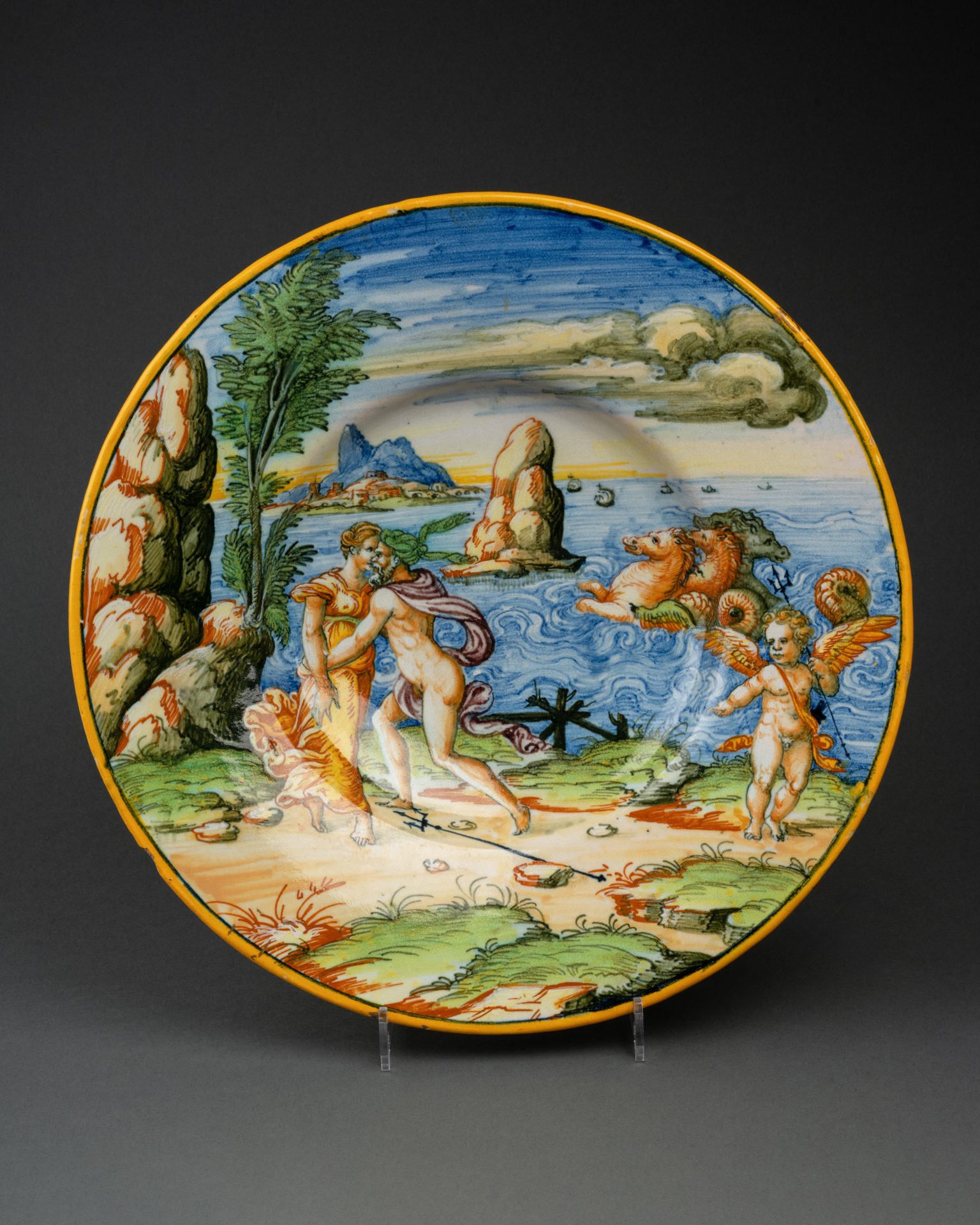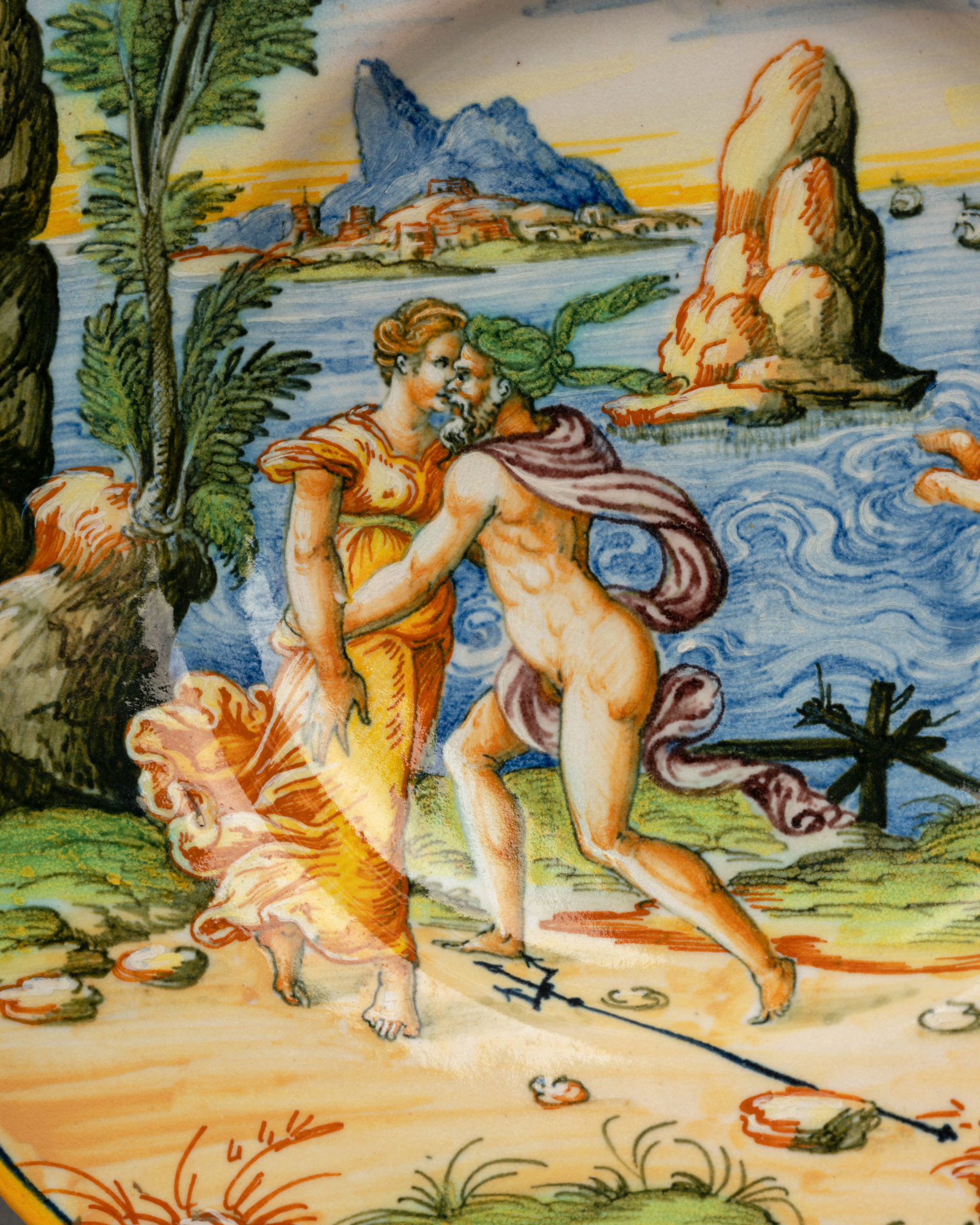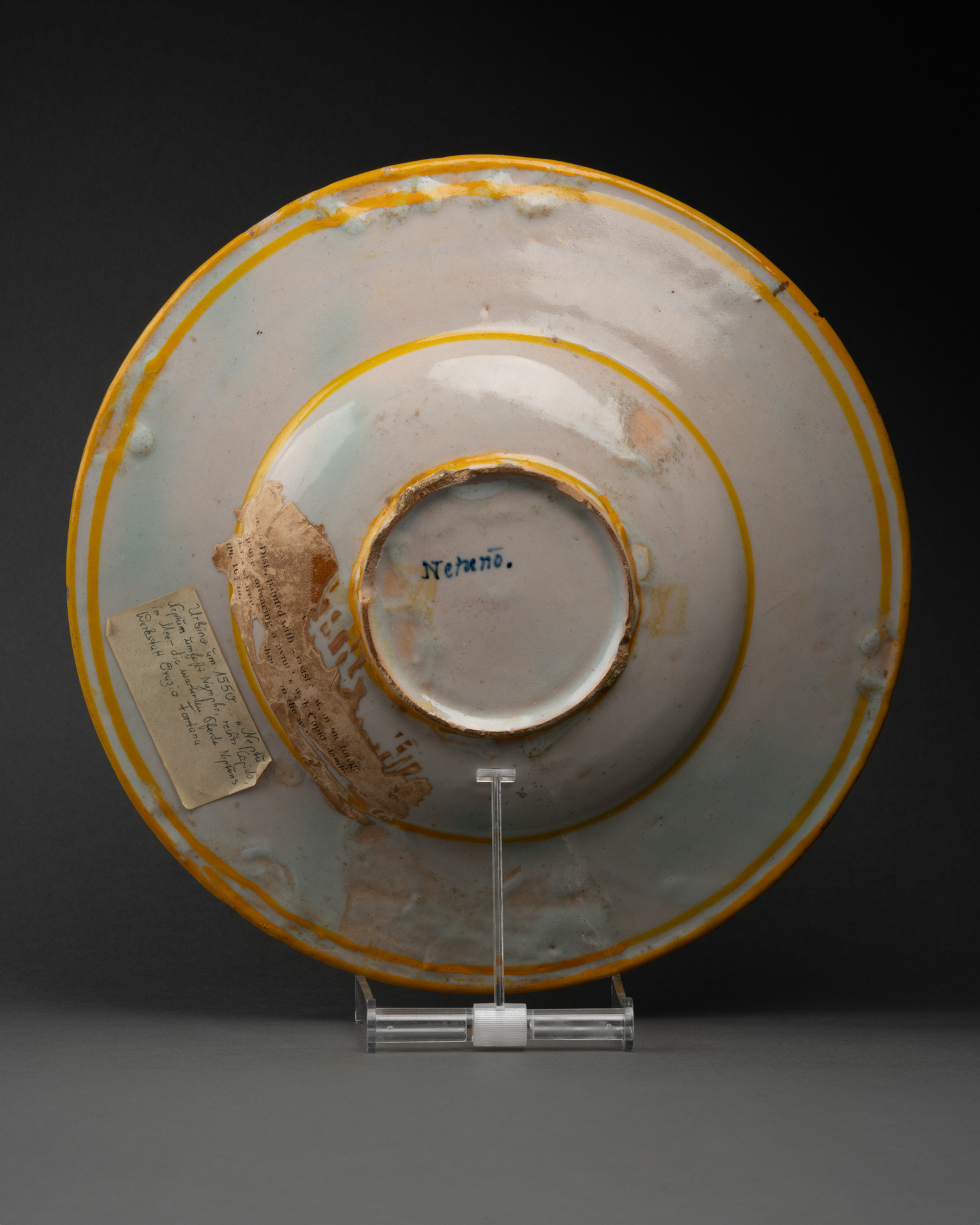Description
Cette magnifique majolique historiée datée de 1550-1570, provient d’Urbino en Italie, probablement issue de l’atelier de Fontana.
La scène peinte montre Neptune enlaçant la nymphe Cénis, sur un rivage. Vêtu d’un turban vert et d’un drapé manganèse, le dieu laisse tomber son trident noir, posé à ses pieds. La nymphe porte une robe ocre gonflée. La présence de Cupidon, ailé et troquant son arc pour un trident, appuie le caractère amoureux de la scène. Placés dans la mer, trois hippocampes constituent le char de Neptune, sorti des eaux. Le paysage est formé par un rocher massif séparant en deux l’arrière-plan, avec les bateaux d’un côté et une île abritant des bâtiments et des montagnes de l’autre.
Cette composition est tirée d’une gravure de Virgil Solis, intitulée Cénis et Poséidon, illustrant l’édition de 1563 des Métamorphoses d’Ovide. La production de l’atelier du céramiste Orazio Fontana (1510-1571) se caractérise surtout par l’attention donnée aux paysages qui constituent la toile de fond des majoliques historiées. Les rochers sont stylisés, les tons bleus, utilisés pour le ciel et l’eau, contrastent avec les tons rouge-orangés et le teint ambré des personnages.
Sur l’arrière de la céramique se trouve plusieurs inscriptions : Netuno, écrit au centre, en bleu; une note descriptive rédigée en allemand, datant et identifiant le plan comme issu de l’atelier d’Orazio Fontana; et enfin une seconde note descriptive fragmentaire rédigée en anglais.
Production d’une qualité exceptionnelle, l’oeuvre étonne à la fois par les couleurs vives qui composent la scène, et par la sensation de mouvement intense, rendue par les drapés volants, par le mouvement chaotique de l’eau, et par la pose du dieu de l’Océan, courant pour aller embrasser la nymphe.
_________________________________
This magnificent historiated majolica, dated 1550-1570, comes from Urbino, Italy, probably from Fontana’s workshop.
The painted scene shows Neptune embracing the nymph Cenis, on a shore. Dressed in a green turban and manganese drape, the god drops his black trident at his feet. The nymph wears a puffy ochre dress. The presence of Cupid, winged and swapping his bow for a trident, emphasizes the amorous nature of the scene. Three seahorses in the sea form Neptune’s chariot, rising from the waters. The landscape is formed by a massive rock dividing the background in two, with boats on one side and an island of buildings and mountains on the other.
This composition is taken from an engraving by Virgil Solis, entitled Cénis et Poséidon, illustrating the 1563 edition of Ovid’s Metamorphoses. The output of the workshop of ceramist Orazio Fontana (1510-1571) is characterized above all by the attention paid to the landscapes that form the backdrop to his historiated majolica. The rocks are stylized, and the blue tones used for the sky and water contrast with the orange-red tones and amber complexion of the figures.
On the back of the ceramics are several inscriptions: Netuno, written in the center, in blue; a descriptive note written in German, dating and identifying the plan as coming from the workshop of Orazio Fontana; and finally a second fragmentary descriptive note written in English.
A production of exceptional quality, the work astonishes both by the vivid colors that make up the scene, and by the sensation of intense movement, rendered by the flying draperies, the chaotic movement of the water, and the pose of the Ocean god, running to embrace the nymph.




